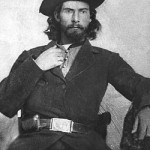 On this day in 1864, anti-Union guerilla leader, Bloody Bill Anderson died at the approximate age of 24 from a gunshot wound during a battle with Union forces near Richmond, Missouri. Born William T. Anderson in 1840 in Hopkins County, Kentucky. Historians have disparate opinions of Anderson; some see him as a sadistic, psychopathic killer, but for others, his actions cannot be separated from the general lawlessness of the time. At one time or another Anderson rode with William Quantrill, and Frank and Jesse James. Anderson married Bush Smith in Sherman, Texas.
On this day in 1864, anti-Union guerilla leader, Bloody Bill Anderson died at the approximate age of 24 from a gunshot wound during a battle with Union forces near Richmond, Missouri. Born William T. Anderson in 1840 in Hopkins County, Kentucky. Historians have disparate opinions of Anderson; some see him as a sadistic, psychopathic killer, but for others, his actions cannot be separated from the general lawlessness of the time. At one time or another Anderson rode with William Quantrill, and Frank and Jesse James. Anderson married Bush Smith in Sherman, Texas.
The Final Footprint – Union soldiers buried Anderson’s body in a field near Richmond. In 1908, Cole Younger, a former guerrilla who served under Quantrill, reburied Anderson’s body, and in 1967, a memorial stone was placed at the grave. Asa Earl Carter‘s novel The Rebel Outlaw: Josey Wales features Anderson as a main character. In 1976, the book was adapted into a film, The Outlaw Josey Wales, which portrays a man who joins Anderson’s gang after his wife is killed by Union-backed raiders. Anderson is portrayed by John Russell. James Carlos Blake‘s novel Wildwood Boys is a fictional biography of Anderson.
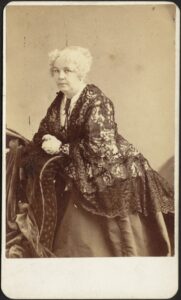 On this day in 1902 writer and activist who was a leader of the women’s rights movement in the U.S. during the mid- to late-19th century, Elizabeth Cady Stanton died in New York City from heart failure, 18 years before women achieved the right to vote in the United States via the Nineteenth Amendment to the U.S. Constitution. Born 12 November 1815 in Johnstown, New York.
On this day in 1902 writer and activist who was a leader of the women’s rights movement in the U.S. during the mid- to late-19th century, Elizabeth Cady Stanton died in New York City from heart failure, 18 years before women achieved the right to vote in the United States via the Nineteenth Amendment to the U.S. Constitution. Born 12 November 1815 in Johnstown, New York.
She was the main force behind the 1848 Seneca Falls Convention, the first convention to be called for the sole purpose of discussing women’s rights, and was the primary author of its Declaration of Sentiments. Her demand for women’s right to vote generated a controversy at the convention but quickly became a central tenet of the women’s movement. She was also active in other social reform activities, especially abolitionism.
In 1851, she met Susan B. Anthony and formed a decades-long partnership that was crucial to the development of the women’s rights movement. During the American Civil War, they established the Women’s Loyal National League to campaign for the abolition of slavery, and they led it in the largest petition drive in U.S. history up to that time. They started a newspaper called The Revolution in 1868 to work for women’s rights.
After the war, Stanton and Anthony were the main organizers of the American Equal Rights Association, which campaigned for equal rights for both African Americans and women, especially the right of suffrage. When the Fifteenth Amendment to the U.S. Constitution was introduced that would provide suffrage for black men only, they opposed it, insisting that suffrage should be extended to all African Americans and all women at the same time. Others in the movement supported the amendment, resulting in a split. During the bitter arguments that led up to the split, Stanton sometimes expressed her ideas in elitist and racially condescending language. In her opposition to the voting rights of African Americans Cady was quoted to have said, “It becomes a serious question whether we had better stand aside and let ‘Sambo’ walk into the kingdom first.” [2] Racist remarks such as these earned her the reproach of abolitionist and former friend Frederick Douglass.
Stanton became the president of the National Woman Suffrage Association, which she and Anthony created to represent their wing of the movement. When the split was healed more than twenty years later, Stanton became the first president of the united organization, the National American Woman Suffrage Association. This was largely an honorary position; Stanton continued to work on a wide range of women’s rights issues despite the organization’s increasingly tight focus on women’s right to vote.
Stanton was the primary author of the first three volumes of the History of Woman Suffrage, a massive effort to record the history of the movement, focusing largely on her wing of it. She was also the primary author of The Woman’s Bible, a critical examination of the Bible that is based on the premise that its attitude toward women reflects prejudice from a less civilized age.
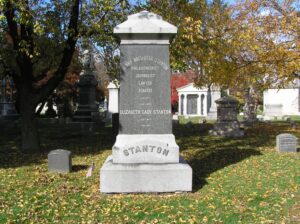
The Final Footprint – The day before she died, Stanton told her doctor, a woman, to give her something to speed her death if the problem could not be cured. Stanton had signed a document two years earlier directing that her brain was to be donated to Cornell University for scientific study after her death, but her wishes in that regard were not carried out. She was interred beside her husband in Woodlawn Cemetery in The Bronx, New York City.
After Stanton’s death, Susan B. Anthony wrote to a friend: “Oh, this awful hush! It seems impossible that voice is stilled which I have loved to hear for fifty years. Always I have felt I must have Mrs. Stanton’s opinion of things before I knew where I stood myself. I am all at sea.”
Other notable Final Footprints at Woodlawn include; Irving Berlin, Miles Davis, Duke Ellington, Lionel Hampton, Fiorello La Guardia, Rowland Macy, Bat Masterson, Herman Melville, J. C. Penney, and Joseph Pulitzer.
#RIP #OTD in 1932 socialite, philanthropist, survivor of the RMS Titanic, “Unsinkable Molly Brown”, Margaret Brown died in her sleep in Manhattan’s Barbizon Hotel from a brain tumor aged 65. Cemetery of the Holy Rood, in Westbury, New York
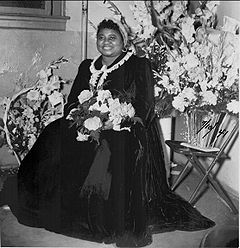
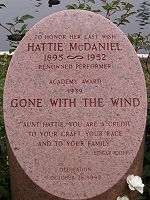
Cenotaph at Hollywood Forever
On this day in 1952, singer-songwriter, comedian, stage actress, radio performer, television star, actress, Academy Award winner, Mammy from Gone with the Wind, Hattie McDaniel died in Woodland Hills, California at the age of 57 from breast cancer. Born 10 June 1895 in Wichita, Kansas to former slaves. Known for her generosity, elegance and charm. Mammy is perhaps one of the most endearing film characters. Rhett Butler’s quote sums it up: “She’s one person whose respect I’d like to have”.
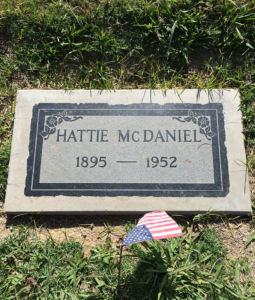 The Final Footprint – McDaniel is interred in Angelus Rosedale Cemetery in Los Angeles. Her grave is marked by a flat granite engraved marker. She planned her funeral in detail requesting a white casket with a white shroud, white gardenias for her hair, a white gardenia blanket and a pillow of red roses. She also requested to be buried at Hollywood Forever Cemetery, but the management refused because they did not take blacks. In 1999, new management at the cemetery tried to right the wrong and offered to have McDaniel moved but her family declined. Instead, Hollywood Forever built a large granite cenotaph memorial on the lawn overlooking the lake to honour McDaniel. The cenotaph includes a quote from her nephew; “Aunt Hattie, you are a credit to your craft, your race and to your family”. It is a popular site for visitors. She has two stars on the Hollywood Walk of Fame. Other notable Final Footprints at Hollywood Forever include; Mel Blanc (yes, his epitaph is “That’s All Folks!”), Lana Clarkson, Iron Eyes Cody, Chris Cornell, Cecil B. DeMille, Victor Fleming, Judy Garland, Joan Hackett, John Huston, Jayne Mansfield’s cenotaph, Tyrone Power, Dee Dee Ramone, Johnny Ramone, Virginia Rappe, Nelson Riddle, Mickey Rooney, Ann Sheridan, Bugsy Siegel, Rudolph Valentino, Fay Wray, and Anton Yelchin.
The Final Footprint – McDaniel is interred in Angelus Rosedale Cemetery in Los Angeles. Her grave is marked by a flat granite engraved marker. She planned her funeral in detail requesting a white casket with a white shroud, white gardenias for her hair, a white gardenia blanket and a pillow of red roses. She also requested to be buried at Hollywood Forever Cemetery, but the management refused because they did not take blacks. In 1999, new management at the cemetery tried to right the wrong and offered to have McDaniel moved but her family declined. Instead, Hollywood Forever built a large granite cenotaph memorial on the lawn overlooking the lake to honour McDaniel. The cenotaph includes a quote from her nephew; “Aunt Hattie, you are a credit to your craft, your race and to your family”. It is a popular site for visitors. She has two stars on the Hollywood Walk of Fame. Other notable Final Footprints at Hollywood Forever include; Mel Blanc (yes, his epitaph is “That’s All Folks!”), Lana Clarkson, Iron Eyes Cody, Chris Cornell, Cecil B. DeMille, Victor Fleming, Judy Garland, Joan Hackett, John Huston, Jayne Mansfield’s cenotaph, Tyrone Power, Dee Dee Ramone, Johnny Ramone, Virginia Rappe, Nelson Riddle, Mickey Rooney, Ann Sheridan, Bugsy Siegel, Rudolph Valentino, Fay Wray, and Anton Yelchin.
#RIP #OTD in 1999 singer-songwriter (“Joy to the World”, “The Pusher”, “No No Song”, “Greenback Dollar”, “Della and the Dealer, “Never Been to Spain”, guitarist, actor (Gremlins), Hoyt Axton died; heart attack; home in Victor, Montana aged 61. Riverview Cemetery, Hamilton, Montana
Have you planned yours yet?
Follow TFF on twitter @RIPTFF

